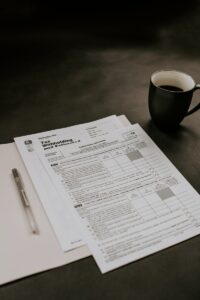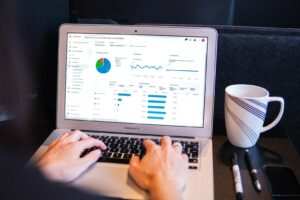Maximizing Your Profitability: Lessons Learned From Your Profit And Loss Report
In the exhilarating world of business, where the pursuit of profitability reigns supreme, there exists a financial compass that guides the way—an invaluable tool known as the Profit and Loss (P&L) report. This seemingly humble document is no less than a treasure map, revealing the secrets to unlocking the riches of financial success. In the pages that follow, we will embark on a journey through the labyrinth of numbers, learning how to navigate the twists and turns of revenue streams, expense management, and cash flow, all in pursuit of a singular goal: maximizing profitability. Brace yourselves for a financial adventure that promises to illuminate the path to prosperity, one lesson at a time.
Understanding the Profit and Loss Report:
 The Profit and Loss (P&L) report, also known as the income statement, serves as a financial snapshot of a business’s performance over a specific period, usually monthly, quarterly, or annually. It outlines the revenue generated and the expenses incurred during that time, ultimately revealing the net profit or loss.
The Profit and Loss (P&L) report, also known as the income statement, serves as a financial snapshot of a business’s performance over a specific period, usually monthly, quarterly, or annually. It outlines the revenue generated and the expenses incurred during that time, ultimately revealing the net profit or loss.
At its core, the P&L report is a critical financial tool because it provides a concise and easy-to-understand overview of a company’s financial health. It helps answer fundamental questions such as:
- Are we making more money than we’re spending?
- Where is our revenue coming from?
- What are our most significant expenses?
- What is our overall profitability?
Understanding these aspects is fundamental to running a successful business. The report typically consists of three main sections: revenue, expenses, and net profit (or loss). Revenue includes income from sales, services, or other sources, while expenses encompass costs like salaries, rent, utilities, and more. Net profit is the difference between revenue and expenses, representing the money left after covering all costs.
The Importance of Timely Reporting:
 Timely and accurate P&L reporting is crucial for several reasons. Firstly, it provides a real-time view of a company’s financial performance, allowing for quick adjustments if the business is not meeting its financial goals.
Timely and accurate P&L reporting is crucial for several reasons. Firstly, it provides a real-time view of a company’s financial performance, allowing for quick adjustments if the business is not meeting its financial goals.
Secondly, it enables business owners and managers to make informed decisions. For instance, if the report reveals declining profitability, it might prompt a review of marketing strategies, cost-cutting measures, or pricing adjustments.
Timely reporting also helps with compliance, especially if a business needs to report its financials to regulatory bodies, shareholders, or lenders. Delays or inaccuracies can lead to legal and financial repercussions.
Having up-to-date financial information is essential for strategic planning. It allows businesses to allocate resources effectively, plan for future investments or expansions, and make informed decisions regarding hiring or downsizing.
Identifying Revenue Streams:

One of the most valuable aspects of the P&L report is its ability to dissect revenue streams. Businesses typically have multiple sources of income, such as product sales, service fees, subscriptions, or royalties. By examining the report’s revenue section in detail, a business can determine which streams are the most profitable and which may need improvement.
For example, a software company may find that its licensing fees generate the most significant revenue, while consulting services, although a part of their offerings, contribute relatively less. Armed with this insight, the company can make strategic decisions to focus more on software development, marketing, or diversify its service offerings.
Identifying revenue streams is not only about recognizing the most profitable ones but also about uncovering hidden opportunities. The P&L report can reveal underutilized assets or untapped markets that a business can leverage to boost revenue.
Understanding revenue sources is critical for forecasting. By analyzing historical data in the P&L report, businesses can make educated predictions about future income streams, helping them allocate resources effectively and set realistic growth goals.
Expense Management:
 Expense management is a critical aspect of financial success, and the Profit and Loss (P&L) report plays a pivotal role in this regard. The report provides a detailed breakdown of a company’s expenses, including variable and fixed costs. Analyzing these expenses allows businesses to identify areas where cost-cutting measures can be implemented.
Expense management is a critical aspect of financial success, and the Profit and Loss (P&L) report plays a pivotal role in this regard. The report provides a detailed breakdown of a company’s expenses, including variable and fixed costs. Analyzing these expenses allows businesses to identify areas where cost-cutting measures can be implemented.
For instance, if the P&L report highlights unusually high marketing expenses with unsatisfactory ROI, a business can decide to reallocate its marketing budget to more effective channels. Similarly, scrutinizing operational costs like utilities, rent, and insurance can uncover opportunities to negotiate better deals or find more cost-efficient alternatives.
Effective expense management not only increases profitability but also ensures financial sustainability. By regularly reviewing and optimizing expenses using the P&L report, businesses can maintain a healthy bottom line and weather economic downturns more successfully.
Tracking Trends and Seasonality:

The P&L report is not just a snapshot of a single moment; it’s a historical record of a company’s financial performance over time. This historical data is invaluable for tracking trends and identifying seasonality patterns.
By analyzing the P&L reports from multiple periods, businesses can identify trends in revenue and expenses. For instance, a retailer may notice that sales consistently spike during the holiday season, allowing them to prepare for increased inventory and staffing needs in advance.
Understanding seasonality is essential for accurate financial forecasting. It enables businesses to plan for revenue fluctuations and optimize their operations accordingly. For instance, a construction company may reduce staff during the winter months when construction projects typically slow down, based on historical P&L data.
Cash Flow Management:
 Profitability does not always equate to positive cash flow. The P&L report may show a healthy net profit, but if there are delays in receiving payments from customers or if expenses are paid upfront, the business may experience cash flow challenges.
Profitability does not always equate to positive cash flow. The P&L report may show a healthy net profit, but if there are delays in receiving payments from customers or if expenses are paid upfront, the business may experience cash flow challenges.
The P&L report can help identify the timing differences between when revenue is recognized and when cash is received, as well as when expenses are incurred and when they are paid. This information is crucial for managing working capital effectively.
Businesses can use the P&L report to assess the cash-rich and cash-poor periods, allowing them to plan for adequate liquidity. This might involve setting aside reserves during high-profit months to cover expenses during lean months or negotiating extended payment terms with suppliers.
Benchmarking and Goal Setting:
 To gauge your business’s financial health accurately, it’s essential to benchmark your performance against industry standards and set achievable financial goals. The P&L report provides the data needed for this comparison.
To gauge your business’s financial health accurately, it’s essential to benchmark your performance against industry standards and set achievable financial goals. The P&L report provides the data needed for this comparison.
By comparing your P&L figures with industry averages or competitors, you can determine whether you’re outperforming or lagging behind. This insight can guide strategic decisions, such as adjusting pricing strategies, investing in specific areas, or optimizing operations to match or exceed industry benchmarks.
Additionally, setting financial goals based on P&L analysis is essential for long-term success. These goals might include targets for revenue growth, expense reduction, or profit margins. Regularly revisiting and updating these goals based on P&L data ensures that your business continues to strive for improvement.
Investor and Stakeholder Confidence:

Transparent and well-managed financial reporting, facilitated by the P&L report, is crucial for building investor and stakeholder confidence. Whether you’re seeking investment, dealing with shareholders, or collaborating with partners, presenting accurate and up-to-date financial information is essential.
Investors want to see that their capital is being used wisely and that the business is profitable and sustainable. Clear P&L reporting demonstrates financial responsibility and commitment to transparency, potentially attracting additional investment.
For stakeholders, including employees and partners, a well-managed P&L report provides assurance that the business is on solid financial footing. It fosters trust and encourages collaboration and long-term relationships.
Tips for Effective P&L Analysis:
To maximize the benefits of the P&L report, it’s crucial to develop effective analysis techniques. Businesses can implement various strategies, such as creating comparative P&L reports, using financial ratios to assess performance, and conducting scenario analysis to anticipate potential outcomes.
Effective P&L analysis also involves regular reviews, ideally on a monthly basis, to identify trends, make timely adjustments, and ensure alignment with strategic objectives.
Case Studies and Success Stories:
 Real-world examples and case studies provide concrete evidence of how businesses have successfully leveraged their P&L reports to optimize profitability. Sharing these stories can inspire other businesses to take action and implement similar strategies.
Real-world examples and case studies provide concrete evidence of how businesses have successfully leveraged their P&L reports to optimize profitability. Sharing these stories can inspire other businesses to take action and implement similar strategies.
Case studies can showcase how companies identified and capitalized on revenue opportunities, managed expenses, navigated seasonality, and achieved financial sustainability through effective P&L analysis. They provide practical insights that can be applied to various industries and business sizes.
Final Thoughts
As we draw the curtain on this enlightening expedition through the Profit and Loss report, we’re reminded of the age-old adage: “Knowledge is power.” Armed with insights into revenue streams, expense management, and the ebbs and flows of financial trends, businesses are poised not just to survive, but to thrive. The P&L report, a beacon in the ever-evolving seas of finance, empowers enterprises to steer their ships towards profitability’s shores. It transforms uncertainty into opportunity and hesitation into bold action. So, let it be known—through meticulous analysis and strategic finesse, businesses can harness the P&L report to illuminate their path to financial success. With this trusty tool in hand, the voyage toward maximizing profitability becomes an adventure well worth embarking upon.
Avail yourself of a personal consultation with our expert, Subhash Sharma, who will address your specific challenges and provide personalized solutions. Contact us today!
Calling all ambitious entrepreneurs and business owners! If you’re looking to take your profits to new heights, we’ve got the perfect solution for you. Our exclusive course below is designed to empower you with the essential strategies and techniques to unlock your business’s full potential!
Enter your details below and sign up to our course, which also includes FREE template to help you plan your strategy.

